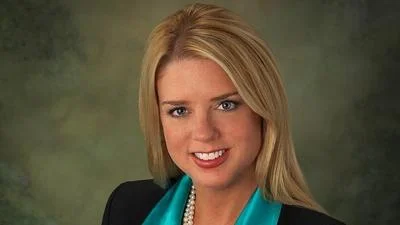Energy and Commerce Committee Chairman Frank Pallone, Jr. (D-NJ) delivered the following opening remarks today at an Environment and Climate Change Subcommittee hearing entitled, “EPA’s Lead and Copper Rule Proposal: Falling Short of Protecting Public Health:"
“Today’s hearing focuses on a widespread and pressing public health crisis - lead contamination in drinking water. Safe drinking water is a fundamental right and duty of our federal government. Every American should be able to turn on their tap, confident that the water coming out is safe. This should be true for all communities, and it must be safe for pregnant women, infants, children and the elderly. But we are falling short and failing communities like Washington, DC; Flint, Michigan; and Newark in my home state of New Jersey.
“The Environmental Protection Agency (EPA) has an important opportunity to strengthen our protections against lead by revising the Lead and Copper Rule, but unfortunately the Trump EPA’s recent proposal squanders that opportunity.
“Lead is a known toxin and Congress banned lead pipes in 1986. But those pipes remain in the ground, leaching lead into the drinking water that comes into our homes and schools.
“Since 1991, EPA has set the maximum contaminant level goal for lead in drinking water at zero. But nearly 30 years later, EPA is still saying we cannot achieve that goal or even get closer to it.
“To make matters worse, the Trump EPA’s proposed rule would not even set us on the path to achieving the goal of lead-free water because it doesn’t require aggressive replacement of lead service lines. The proposal also falls far short of providing the certainty and clarity states and localities need in implementing the Lead and Copper Rule.
“It ignores the lessons of Flint, so it will fail to prevent the next Flint. It also doesn’t properly reflect some of the lessons from the drinking water issue in Newark where aggressive lead pipeline replacement appears to be working. Any final rule that fails to aggressively replace lead service lines will fail to solve the problem of lead in drinking water. These shortcomings should be addressed as EPA works to finalize this important rule.
“Ultimately, if EPA were to finalize this proposal, there is a real possibility that 30 years from now we could be no closer to ensuring lead free water for the American people.
“We simply cannot and will not allow that to happen. The inactivity over the last 30 years certainly highlights the weaknesses in the Lead and Copper Rule. The fact is that the Safe Drinking Water Act instructs EPA to set drinking water standards based on cost-benefit analysis, not public health. This is a fundamental flaw in the statute that leaves vulnerable populations and disproportionately exposed communities unprotected.
“This hearing is the beginning of work in this Subcommittee to explore how the Safe Drinking Water Act should be reformed. I thank the Chairman Tonko for undertaking this work. The Safe Drinking Water Act should absolutely ensure that drinking water is safe, and that means health protective, not defined by cost-benefit analysis.
“Chairman Tonko and I have worked together repeatedly over the years to provide more funding for drinking water infrastructure. That funding not only helps cities and towns modernize their infrastructure and protect public health, but it also creates jobs. We will continue to work to provide the resources water utilities need to address lead and other threats to public health. The cost of replacing lead service lines should be addressed through infrastructure funding and financing - it should not dictate how safe our water can be.
“The science is clear - there is no safe level of lead exposure. The time for action is overdue. EPA must strengthen this proposal to protect public health, including the health of vulnerable populations. And we in Congress should strengthen the Safe Drinking Water Act to do the same.
“I would also like to welcome Kim Gaddy from Clean Water Action of New Jersey for joining us today. I look forward to hearing from Kim and from all of our witnesses about ways we can strengthen the Safe Drinking Water Act for the future to better protect the American people."





